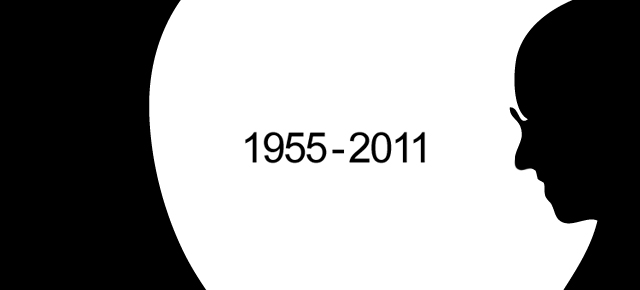Welcome to the Third World War, where the enemy is not fascism, communism or any other “ism” but an object just over one 10,000th of a millimeter wide. In one of the greatest ironies of history, the world is being ravaged not by the very large (war, earthquakes, hurricanes, or nuclear weapons) but the unimaginably small.
 Coronaviruses derive their name from the spikes that form a crown or “corona” atop their spherical body. These spikes are what makes the virus so lethal because they enable it to latch onto the cells of lungs, causing severe respiratory problems. In addition, many infected people don’t exhibit symptoms right away, if at all. These people continue to move about, unknowingly infecting others. The death rate is 1% to 10% – the ultimate “killer app”.
Coronaviruses derive their name from the spikes that form a crown or “corona” atop their spherical body. These spikes are what makes the virus so lethal because they enable it to latch onto the cells of lungs, causing severe respiratory problems. In addition, many infected people don’t exhibit symptoms right away, if at all. These people continue to move about, unknowingly infecting others. The death rate is 1% to 10% – the ultimate “killer app”.
The war against Corona is unlike any other. In the last World War, half the world was fighting the other half. In this war, the entire world is united against one enemy. All the greatest minds (scientists, epidemiologists, medical specialists, software engineers, researchers and pharmaceutical developers) are working together to develop a treatment and vaccine. U.S scientists were able to decode the DNA of the coronavirus within weeks. Based on this DNA structure, they reversed engineered a potential vaccine by comparing the DNA of the coronavirus against a database of other vaccines and the viruses that these vaccines effectively treat. However, it could be up to 18 months before a viable vaccine is released. Why the delay? Any virus must first be tested on humans to verify its safety and efficacy. Software’s the easy part; the bottleneck is the “wetware” – that is, people.
 Sadly, we knew this war was coming. Governments were warned repeatedly that an outbreak of this magnitude was likely, yet did little to prepare. Four years ago, Bill Gates prophesied this event in a Ted Talk entitled, appropriately enough: We’re Not Ready. In this talk, he describes in detail the plague that would occur just a few years later. He references the movie Contagion which also predicted current events. This film dramatizes a virus from Asia with a genetic component from a bat that rapidly spreads throughout the world. There are scenes of hoarding, panic and death, and references to social distancing. Just as a virus can mutate, this film has mutated from a fictional drama into a documentary.
Sadly, we knew this war was coming. Governments were warned repeatedly that an outbreak of this magnitude was likely, yet did little to prepare. Four years ago, Bill Gates prophesied this event in a Ted Talk entitled, appropriately enough: We’re Not Ready. In this talk, he describes in detail the plague that would occur just a few years later. He references the movie Contagion which also predicted current events. This film dramatizes a virus from Asia with a genetic component from a bat that rapidly spreads throughout the world. There are scenes of hoarding, panic and death, and references to social distancing. Just as a virus can mutate, this film has mutated from a fictional drama into a documentary.
Clearly, there was a delayed reaction from governments the world over. What’s disturbing is that this delay continues. There seems to be a two-week lag behind the actions that governments should be taking and the ones they are taking. That is, they are on a two-week time delay. It’s unfortunate that we cannot create a mini-time machine and force world leaders to travel just a little bit into the future. With our backs to the wall, we must go back to the future.
 What the world is watching now with bated breath are the numbers. Specifically, everyone is closely following the number of new infections at the state or provincial and national level. As quickly has these numbers have grown, they will peak and then start to decrease. That is, the growth curve will begin to invert. It is the most important inversion in recent history, but it won’t be the first inversion to occur during this crises.
What the world is watching now with bated breath are the numbers. Specifically, everyone is closely following the number of new infections at the state or provincial and national level. As quickly has these numbers have grown, they will peak and then start to decrease. That is, the growth curve will begin to invert. It is the most important inversion in recent history, but it won’t be the first inversion to occur during this crises.
 Many films (such as the previously mentioned Contagion) have dramatized an outbreak of this type, with startling scenes of deserted cities. Today, the entertainment world and the real world have inverted. Scenes previously filmed now occur in real life. Conversely, films and TV shows from the recent past have scenes of crowded streets, people in airplanes, taking cruises, and being close together, all things which used to be in the real world.
Many films (such as the previously mentioned Contagion) have dramatized an outbreak of this type, with startling scenes of deserted cities. Today, the entertainment world and the real world have inverted. Scenes previously filmed now occur in real life. Conversely, films and TV shows from the recent past have scenes of crowded streets, people in airplanes, taking cruises, and being close together, all things which used to be in the real world.
 Social media has also been inverted. Previously, it had been criticized for being a poor substitute for personal contact; for leading to people being less social. Now, because people are unable to be physically together, social media, especially video chat, has finally begun to live up to its name. Like many others, I converse with friends, family and coworkers using video chat. While not as meaningful as in-person contact, it’s a powerful alternative; a generic drug substitute for human contact.
Social media has also been inverted. Previously, it had been criticized for being a poor substitute for personal contact; for leading to people being less social. Now, because people are unable to be physically together, social media, especially video chat, has finally begun to live up to its name. Like many others, I converse with friends, family and coworkers using video chat. While not as meaningful as in-person contact, it’s a powerful alternative; a generic drug substitute for human contact.
On the subject of social media: one expression I’ve always abhorred is “going viral”. Current events have taught us that “going viral” is not exactly a good thing. We’d never say that a tweet has “gone murder” or “gone genocide”, but felt comfortable saying it spread like a virus. May this expression die out as quickly as the virus itself.
But perhaps the two most important things that have been inverted are the significant and the trivial. Do you remember the news a few weeks ago? The U.S. presidential race? Global warming? The train blockades in Canada? Harry and Meghan relinquishing their royal titles? How utterly inconsequential these things appear now. It is a tragic law of nature that to refocus the world, calamity is required. The formula appears to be: humanity + calamity = humanity 2.0. The price for this upgrade is a heavy one.
In the end, we must have hope. We must recognize that although we’re powerless over this virus, we’re not powerless over how we act and respond to it. Social distancing is unpleasant, but better to be placed six feet apart horizontally on the ground than six feet vertically into the ground.
In the end, it is our thoughts that will keep us sane, and all thoughts spring from words. We can look again to the last Word War for inspiration. Winston Churchill concluded one of his famous speeches with these words:
We shall not fail or falter; we shall not weaken or tire. Neither the sudden shock of battle, nor the long-drawn trials of vigilance and exertion will wear us down. Give us the tools, and we will finish the job.
Churchill spoke these words in 1941. Nearly 80 years later, we’re using new tools to fight a new enemy: the tools of medical science and technology.
These are the tools; let us finish the job.
Stay safe.



 Greece is now dangerously close to defaulting on its national debt. Despite the recent bailouts, many financial experts believe that the situation is unsustainable. Greece simply cannot afford to pay its bills. Its debt to GDP ratio is a staggering 140%, meaning it owes almost one and half times the value of all its goods and services. It could only be a matter of time before Greece defaults.
Greece is now dangerously close to defaulting on its national debt. Despite the recent bailouts, many financial experts believe that the situation is unsustainable. Greece simply cannot afford to pay its bills. Its debt to GDP ratio is a staggering 140%, meaning it owes almost one and half times the value of all its goods and services. It could only be a matter of time before Greece defaults. Apple finally launched its latest iPad. Because it comes after the iPad 2, most everyone expected it to be named the iPad 3, following the naming conventions of the iPhone. Instead, Apple gave it a name that only a marketer could have developed:
Apple finally launched its latest iPad. Because it comes after the iPad 2, most everyone expected it to be named the iPad 3, following the naming conventions of the iPhone. Instead, Apple gave it a name that only a marketer could have developed:
 When not wanting to pay cash, we “put it on plastic”. In Canada, plastic will soon be the only choice, as our paper bills are replaced by polymer ones.
When not wanting to pay cash, we “put it on plastic”. In Canada, plastic will soon be the only choice, as our paper bills are replaced by polymer ones.
 It’s not every day that you get to experience an earthquake, and I’ve had the misfortune of experiencing two, both times in the building I work. The last one, with an epicenter in Virginia, shook our entire floor for several seconds.
It’s not every day that you get to experience an earthquake, and I’ve had the misfortune of experiencing two, both times in the building I work. The last one, with an epicenter in Virginia, shook our entire floor for several seconds. What a great day to be Chilean.
What a great day to be Chilean. It’s a slow month in politics when the current burning issue for the
It’s a slow month in politics when the current burning issue for the
You must be logged in to post a comment.